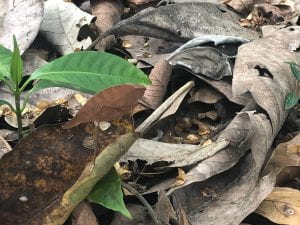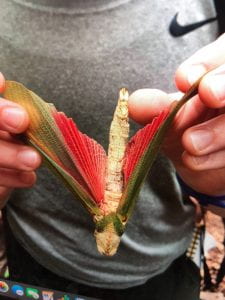Today was our last day at Las Cuevas Research Station and we had a full day. We collected all the camera traps that we set up the first day. Later in the evening, we looked through the camera trap photos and the most exciting photo was of a Tapir!
We also excavated a young and old leafcutter ant nest and saw the chamber where they keep their fungi garden in the older nest. The ants bring the leaves to the fungi for it to digest to a form that the ants can eat. It was a little scary when the army ants came out of the nest and started surrounding our boots because they can cut through pants and draw blood.
It was a great day for spotting Orthoptera. I saw at least two katydids. Both mimicked brown leaves to avoid predation. I think one of them was the Dead leaf katydid (Orophus tesselatus) because it has a very similar shape and pattern of the wings to the picture on my ID card.


The last Orthoptera I saw was dead and had its antennae and legs eaten off which makes it harder to identify. The hind wings were like a bright red fan which made me think it was the Giant Red Winged Grasshopper (Tropidacris cristata) and not a katydid. It was also very large and had bumps on the pronotum which are characteristics of this grasshopper.





